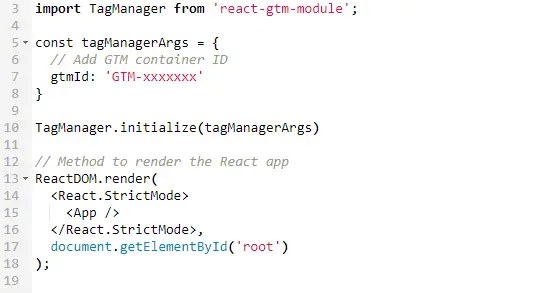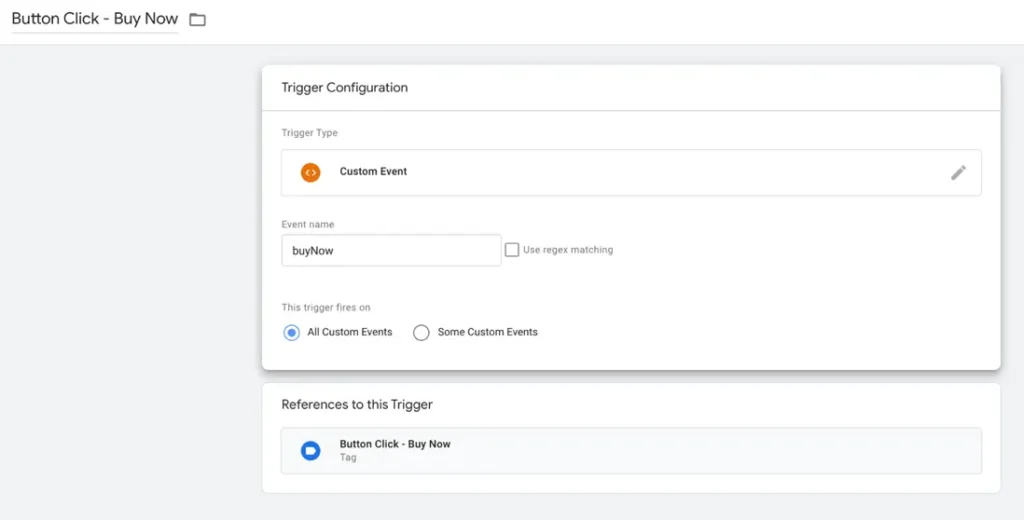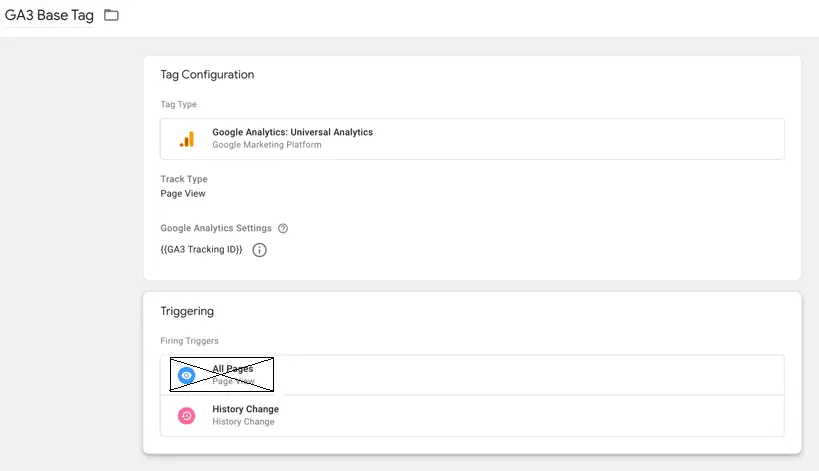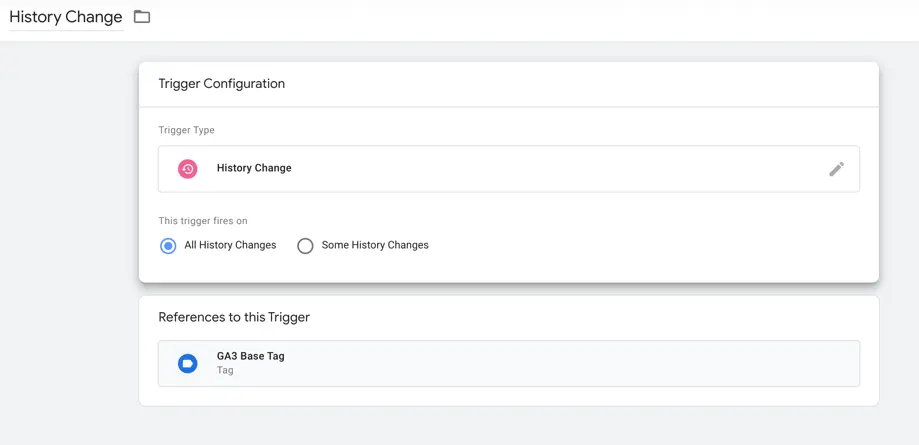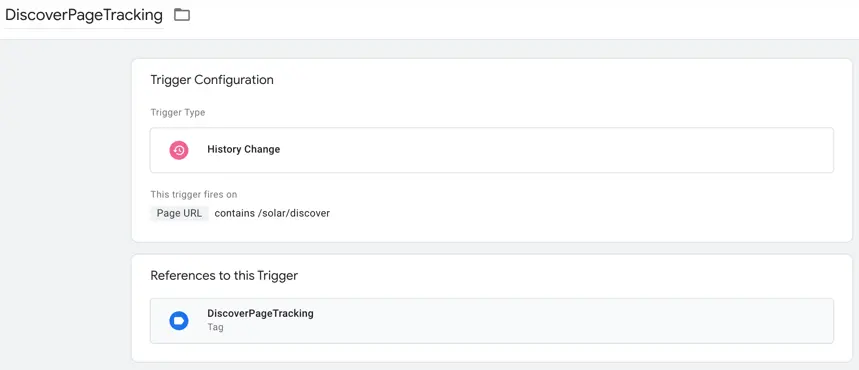Paid ads can be incredibly lucrative for your business.
Ads platform such as Google Ads, Facebook Ads, and Microsoft Ads, you can run profitable ad campaigns that can scale up your business and bring sustainable growth.
However, you can also spend tons of money, get frustrated, and stop advertising online.
What makes a key difference?
Successful online marketers need to deliver the right message at the right moment.
That’s why your ad copy can be the difference between a failed campaign and a wildly successful one.
Simply put, a better creative message will improve the relevancy of your ads and drive more qualified clicks from your ad campaigns.
Now let’s dive into the details and understand why ad copy is important and how you can improve it.
Put yourself in place of your target audience for a second. People in your target audience do not see your keyword lists, bids, budgets, and other campaign settings.
All they see is the ad copy and other elements of your ad creatives, such as image extensions, callouts, and site links.
You compete with millions of other advertisers, just so that you can grab the attention of your prospective customers for a few seconds – that’s why attention is becoming increasingly scarce and valuable.
So today, before you can even think about starting to sell a product or service, you need to establish a first “touchpoint” with your customers.
Just a quick introduction to build awareness and introduce your offer. If this is not challenging enough, consider this: according to a Microsoft study, people now have an attention span of eight seconds.
So you’ve got eight seconds or less to offer value even before anyone clicks on your ad.
So what does a typical search ad contain?
A standard search ad contains a heading, a short description, and a link to the offer you are making. The term “ad copy” refers to this entire combination of text, images, and other visual elements that the users see on their screens.
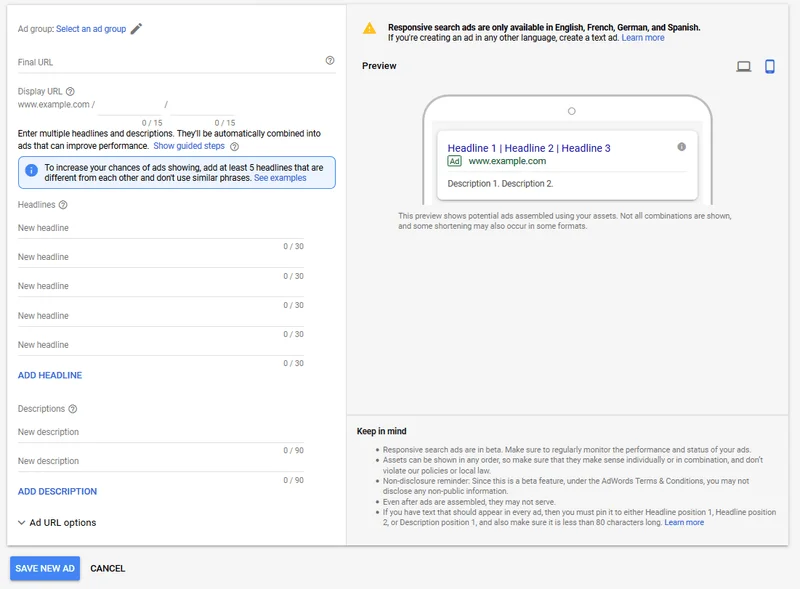
Some of the key elements that you need to master:
Headline [30 characters]: This is that eye-catching title that describes your company or product. It’s a short and sweet summary of your offer. It should ideally include your target keywords. Just like a newspaper article title, its main function is to grab attention.
Description [90 characters]: Time to get creative! Descriptions will be the bulk of the text in your ads. You can use them to give specific details about your offer and explain why the consumers should give you a chance.
We highly recommend trying these descriptions to the text on your landing pages. The key is to summarize your value proposition using a very short text format.
Creative, even funny, ad copy can make a big difference, but it’s not very easy to keep it fun and informative. If in doubt, just stick to the content on your landing pages and repurpose them for your ads.
Display URL [30 characters]: This is the URL that consumers see on your ad. It may not be the actual URL they will visit.
Due to limited space on the ads, these are generally shortened representations of the actual link and they are used to reassure the users that the link is relevant to their search query. Make sure to test your links before launching your campaigns.
Here are the official character limits provided by Google
Some guidelines that you must follow always:
There are no strict rules for writing ad copy. It’s a creative process and you can improve your skills by practice. These are the top five things to remember as you improve your writing skills.
1. Know What Your Target Market Wants
- The most effective way to obtain the interest of your target market is to show them that you recognize – and can solve their problems.
- Before you start your ad copy-writing, do this exercise: put yourself in the shoes of your ideal customer.
- Think of what sort of problem they’re experiencing, and imagine how they may search for the solution to that problem.
- Write your ad copy as a response to that imaginary customer’s needs and search habits.
2. Address your Target Audience
- Make use of the words “you” and “your” in your ads.
- Speaking to your audience directly will reassure them and make them feel really important.
- It develops the sense that your business/services are personable – you intend to create a pleasant and helpful relationship with customers right off the bat.
3. Match your advertisement copy to the landing web page.
- As online marketing professionals, we understand the importance of having great landing page copy.
- Once you start using advertisements to support your landing page, consistency between the two becomes critical.
- Don’t assure a user of a cost-free ebook in a search advertisement if the ebook is not actually cost-free, or tease a 10-day trial when there is in reality no trial at all. Customers value consistency, and they’re more probable to believe in your product if they are confident in your offerings.
Here’s an example of a promise made and a promise kept. Soccer.com uses a search advertisement to promote an offer: “$4.99 shipping on orders over $99”. When a user clicks on their ad, they’re taken to a landing page that displays this exact promotion. The result: increased Quality Score, but more importantly: happier customers.
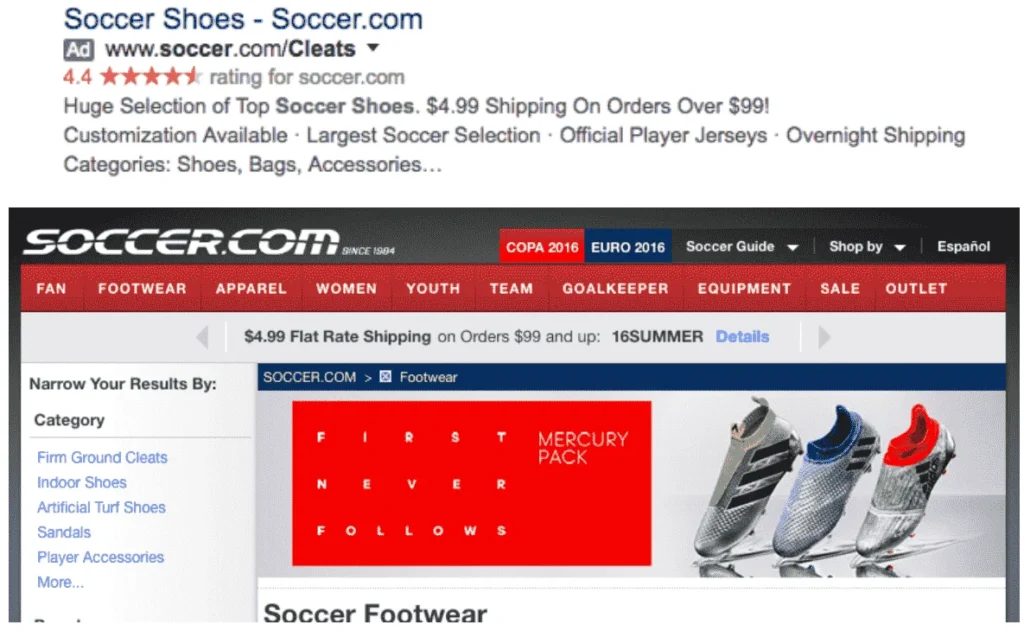
4. Split Test Your PPC Ads Frequently
Digital marketing is part science, part art. One tested way to improve performance is to use tests and experiments in your campaigns.
This holds true for ad copy as well. Regular testing and experiments are one of the best ways to boost campaign performance.
Your ad accounts are full of valuable data. More data you can analyze, the more patterns you’ll detect and improve your ad strategy.
Most ad platforms offer practical ways to run experiments and analyze results.
Instinct can be far off the mark when it involves what will work in advertising, so it’s very important to base your decisions on data you have rather than guesswork.
Few concepts for split tests you can try include:
- Positioning your call to action in different targeting locations.
- Comparing different calls to action.
- Experimenting with different numbers and statistics in your ad copies.
- Trying different display URLs.
- Showing different benefits of your product or service.
5. Learn from the competition.
Standing out from your competition is key when creating search ads. Your search ad copy is what will differentiate your brand from others in the industry.
It’s important to understand how your offer looks when potential customers can immediately compare it to your competition’s offers.
No matter how optimized your campaigns maybe, if you’re not able to match the offers of your competitors, you’ll have a difficult time with conversions.
This doesn’t need to be a one-on-one comparison of each offer your competitors are advertising. The key point is to compare your overall value proposition to all the other advertised options in the marketplace.
Here are three search ads that come up when you Google “hotels in New York.” The latter two websites have almost the exact same ad copy, but the first result is a bit different.
Booking.com is likely watching its competitors very closely and knows its differentiated copy is what will attract more clicks.
It’s also very interesting to note that all three ads mention “price guarantee”.
If you were to write the fourth ad, would you include this in your ad copy? We sure hope so.

Conclusion:
Pay-per-click ads are short and concise, and they contain a very limited number of characters.
Combining different elements of your ad copy in creative and informative ways can make a big difference in your campaign’s performance metrics.
The best copywriters have a high degree of empathy: they can think like the consumers and craft ad copy that appeals to the needs and wants of the marketplace.
If you can also put yourself in the shoes of consumers interested in your products and services, you’re on your way to becoming an expert copywriter.
About the author(s):
Shivendra is our Chief Marketing Officer. He has the astonishing ability to turn our client’s business objectives into well-crafted digital marketing plans. He continues to amaze us with his leadership skills and his lifestyle. Naturally, he has a mini-zoo at home consisting of three dogs, two cats, and a lizard. He lives in New Delhi, India.
Rakshit is our lead designer. He is the creative genius behind our awesome look. He has a keen eye for design and an amazing level of patience that turns our cloudy ideas into pieces of art. He enjoys Formula 1® Racing more than most. He lives in Kolkata, India.
